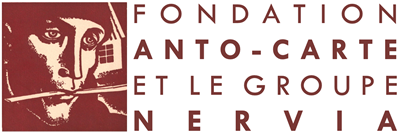
NAVEZ LEON
(5 juillet 1900, Mons - Auderghem, 27 août 1967)
Born in Mons on 5 July 1900, Léon Navez was a brilliant student at the academies of Mons and Brussels from 1920 to 1923, where he studied under Émile Fabry, Jean Delville, Herman Richir and Anto Carte.
Navez also spent most of his apprenticeship in decoration workshops. He completed his training with Florent-Prosper Colpaert, a glass painter in Brussels.
In 1928, he became one of the founding members of Nervia and was the first of the group to win the Prix de Rome for painting at such a young age.
In 1929, he became a professor at the Academy of Fine Arts in Mons (where he remained until 1946).
He went to Florence with Anto Carte. They both admired Italian painting and drew from it a lively philosophy and teaching.
From Mons, he returned to Brussels to teach at the École nationale supérieure d'Architecture et des Arts décoratifs de la Cambre.
In 1930, he created the cartoons for the stained glass windows in the Abbey of La Cambre for the master glass artist Florent-Prosper Colpaert.
He illustrated six original lithographs for Pureté, a collection of poems by six Belgian poets: Armand Bernier, Edmond Vandercammen, Maurice Carême, Odilon Jean Perier, Auguste Marin and Robert Vivier.
In the post-war period, Navez's art changed under the influence of Cubism. He painted summarily in a few strokes, moving away from his first very precise, highly drawn style.
Then, in 1948, he developed an art style similar to Brabant Fauvism, leaving more room for colour while retaining the line.
He created shapes into which colours were inserted.
His trip to the Congo in 1956 reinforced his quest for purity of line.
His art moved towards total simplicity. He returned to an intimate style of painting, based on scenes of daily life and detached from accessories.
In 1958, he tried his hand at Japonism, once again demonstrating his desire to explore new forms.
He died in Auderghem on 21 August 1967.
Léon Eeckman said of Navez that "his work reflects his character. Drawing was always at the heart of his art, and he embellished and complemented it with his various interpretations of painting, while maintaining a figurative expression. He was receptive and sensitive to all applications of art. He took the lessons of abstract art and incorporated them into figurative art.
We will conclude by saying that, of all the artists in the Nervia Group, Navez was certainly the one who experimented most with different techniques.
Navez also spent most of his apprenticeship in decoration workshops. He completed his training with Florent-Prosper Colpaert, a glass painter in Brussels.
In 1928, he became one of the founding members of Nervia and was the first of the group to win the Prix de Rome for painting at such a young age.
In 1929, he became a professor at the Academy of Fine Arts in Mons (where he remained until 1946).
He went to Florence with Anto Carte. They both admired Italian painting and drew from it a lively philosophy and teaching.
From Mons, he returned to Brussels to teach at the École nationale supérieure d'Architecture et des Arts décoratifs de la Cambre.
In 1930, he created the cartoons for the stained glass windows in the Abbey of La Cambre for the master glass artist Florent-Prosper Colpaert.
He illustrated six original lithographs for Pureté, a collection of poems by six Belgian poets: Armand Bernier, Edmond Vandercammen, Maurice Carême, Odilon Jean Perier, Auguste Marin and Robert Vivier.
In the post-war period, Navez's art changed under the influence of Cubism. He painted summarily in a few strokes, moving away from his first very precise, highly drawn style.
Then, in 1948, he developed an art style similar to Brabant Fauvism, leaving more room for colour while retaining the line.
He created shapes into which colours were inserted.
His trip to the Congo in 1956 reinforced his quest for purity of line.
His art moved towards total simplicity. He returned to an intimate style of painting, based on scenes of daily life and detached from accessories.
In 1958, he tried his hand at Japonism, once again demonstrating his desire to explore new forms.
He died in Auderghem on 21 August 1967.
Léon Eeckman said of Navez that "his work reflects his character. Drawing was always at the heart of his art, and he embellished and complemented it with his various interpretations of painting, while maintaining a figurative expression. He was receptive and sensitive to all applications of art. He took the lessons of abstract art and incorporated them into figurative art.
We will conclude by saying that, of all the artists in the Nervia Group, Navez was certainly the one who experimented most with different techniques.




